9 Pleiospilos Succulents That Will Make Your Jaw Drop
Get ready to fall head over heels for these mesmerizing mimicry plants from South Africa! Pleiospilos, also known as split rocks or living rocks, are succulents that have evolved to mimic pebbles and stones in their natural habitat. With their fleshy leaves resembling small rocks and vibrant flowers blooming from the center, these fascinating plants are sure to captivate you.
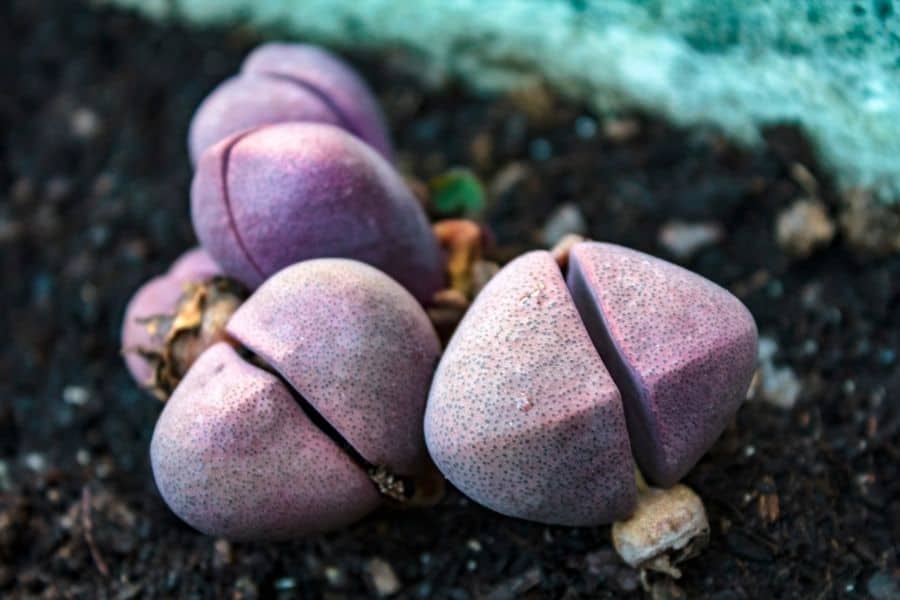
Contents
- 1 Types of Pleiospilos Succulents
- 1.1 Pleiospilos bolusii (Stone Quaggafig)
- 1.2 Pleiospilos compactus (Ostrichfoot Quaggafig)
- 1.3 Pleiospilos compactus ssp canus (Dog Quaggafig)
- 1.4 Pleiospilos compactus ssp fergusoniae
- 1.5 Pleiospilos compactus ssp minor (Small Quaggafig)
- 1.6 Pleiospilos compactus ssp sororius
- 1.7 Pleiospilos nelii (Splitrock Quaggafig)
- 1.8 Pleiospilos nelii cv Royal Flush
- 1.9 Pleiospilos simulans (Liver Quaggafig)
- 2 How to Grow and Care for Pleiospilos
- 3 How to Propagate Pleiospilos
- 4 FAQs
Types of Pleiospilos Succulents
Pleiospilos bolusii (Stone Quaggafig)
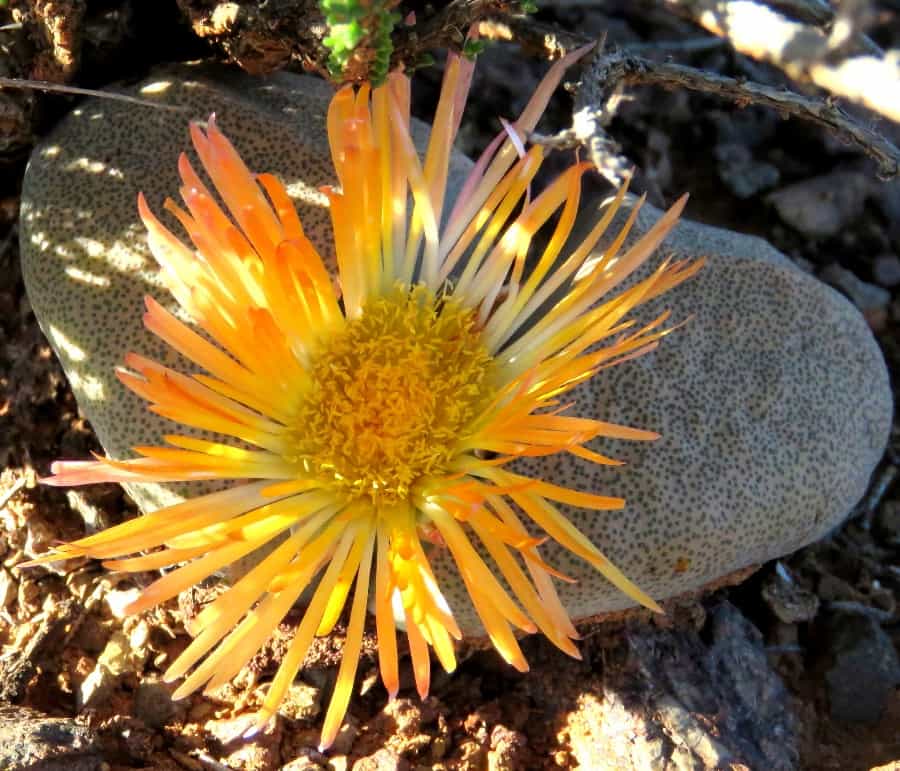
This small, stemless succulent grows up to 3 inches tall and 6 inches wide, producing stunning yellow daisy-like flowers. Its rock-like leaves are practically indistinguishable from the surrounding pebbles, serving as a clever camouflage against predators.
Pleiospilos compactus (Ostrichfoot Quaggafig)
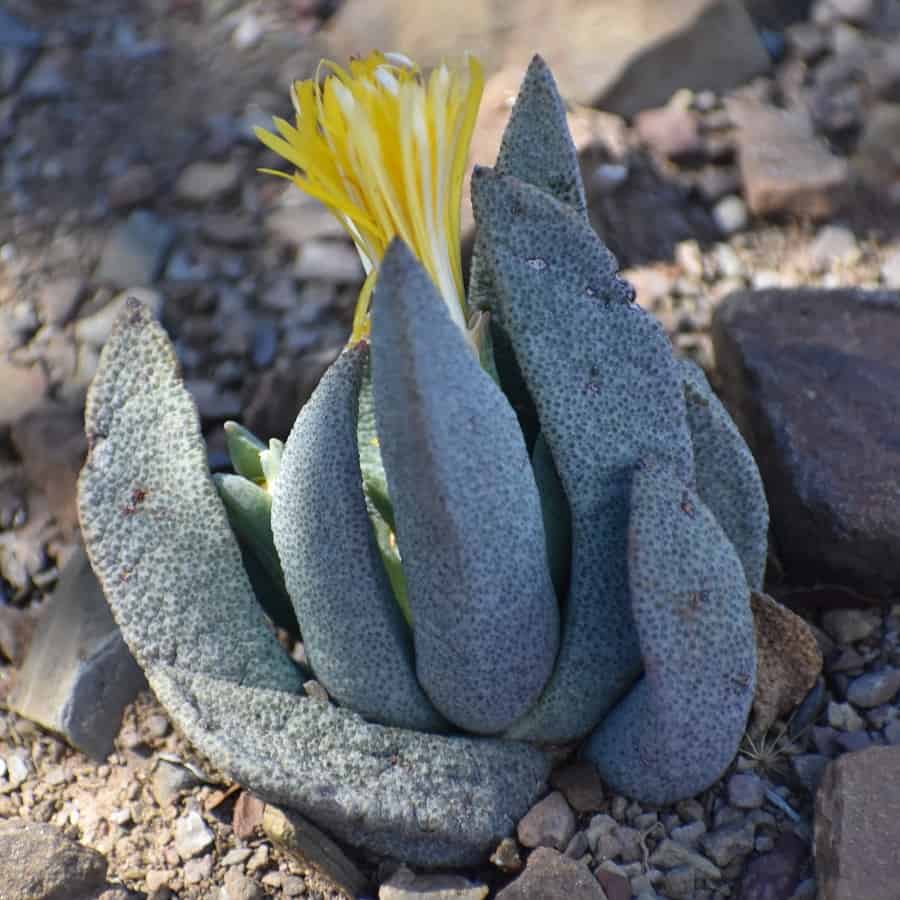
A highly variable species, P. compactus never exhibits the extreme mimicry forms of other Pleiospilos. It forms clusters of branches, each with 1-3 pairs of pale green, speckled leaves that resemble split rocks. Its showy daisy flowers appear in summer and autumn.
Pleiospilos compactus ssp canus (Dog Quaggafig)
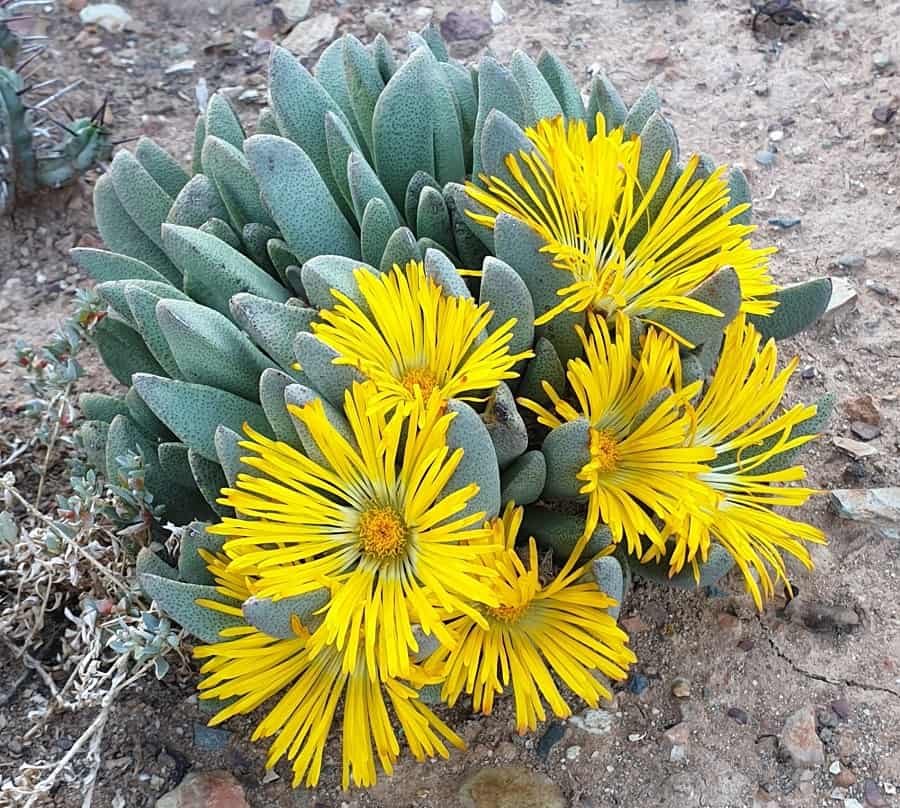
Distinguished by having 12 ovary cells and shortly stalked capsules, this subspecies is a free-flowering rock mimic with pale green, speckled leaves and showy daisy-like flowers.
Pleiospilos compactus ssp fergusoniae
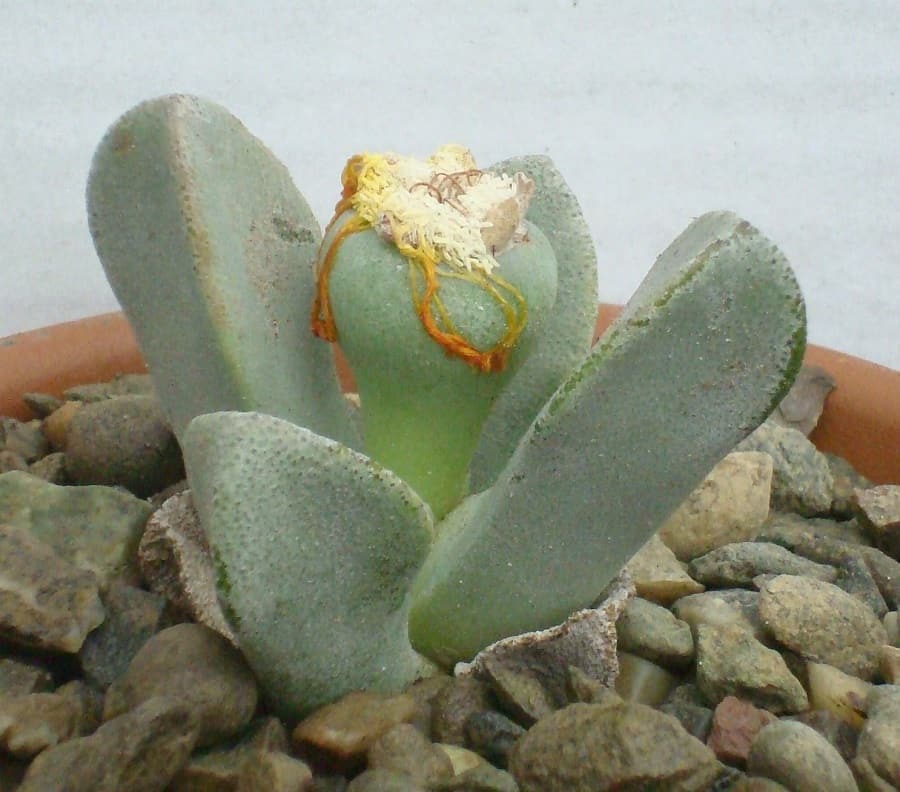
Pleiospilos compactus ssp minor (Small Quaggafig)
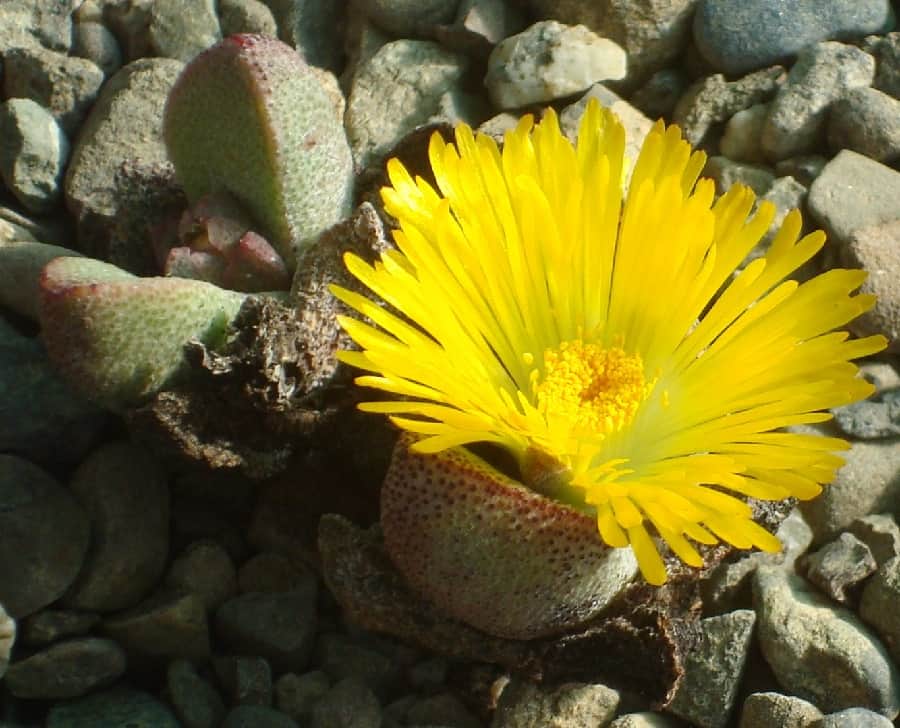
Pleiospilos compactus ssp sororius
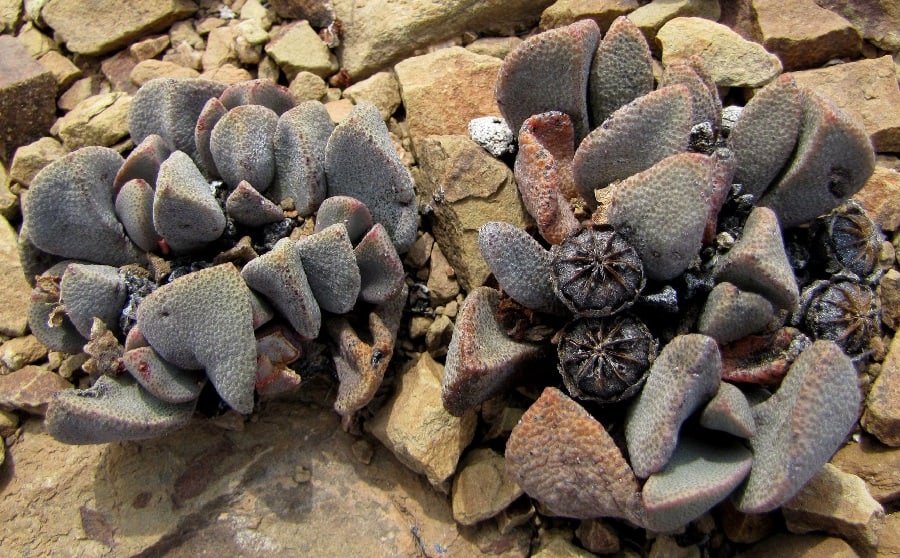
Pleiospilos nelii (Splitrock Quaggafig)
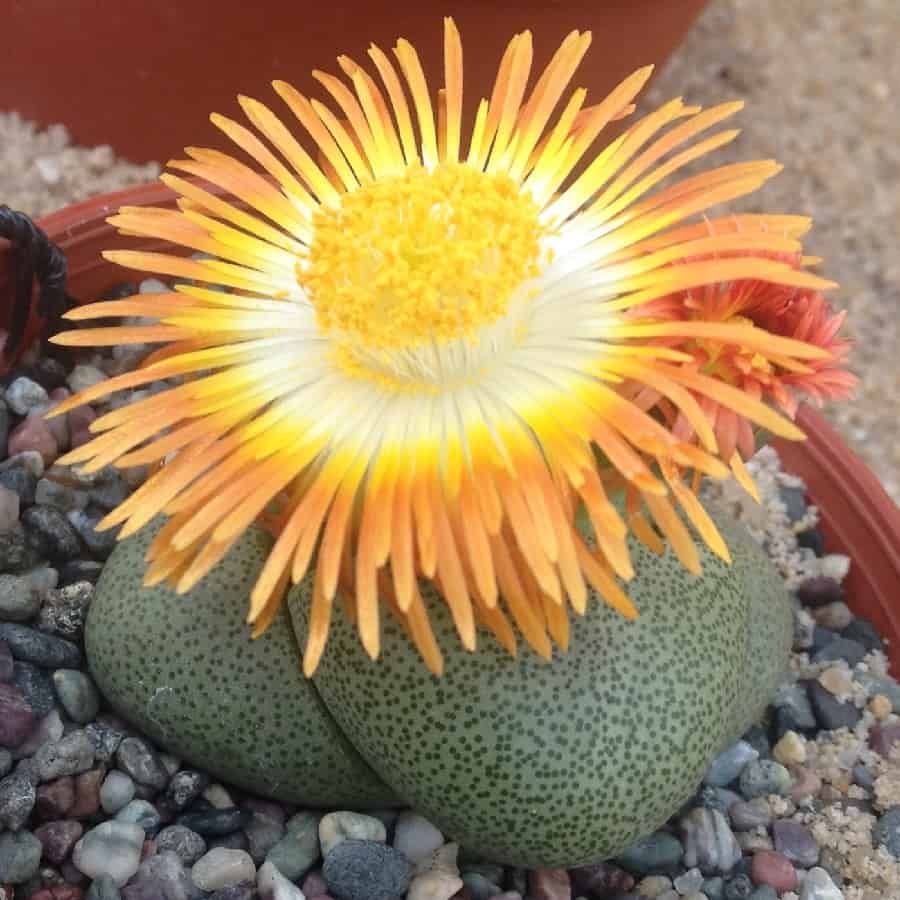
Vaguely reminiscent of a Lithops, this nearly spherical succulent can grow up to 3 inches tall and 4 inches across. Its globe-shaped leaves, fused at the base, have a deep fissure in the middle and a grey-green to brownish color with raised dark dots.
Pleiospilos nelii cv Royal Flush
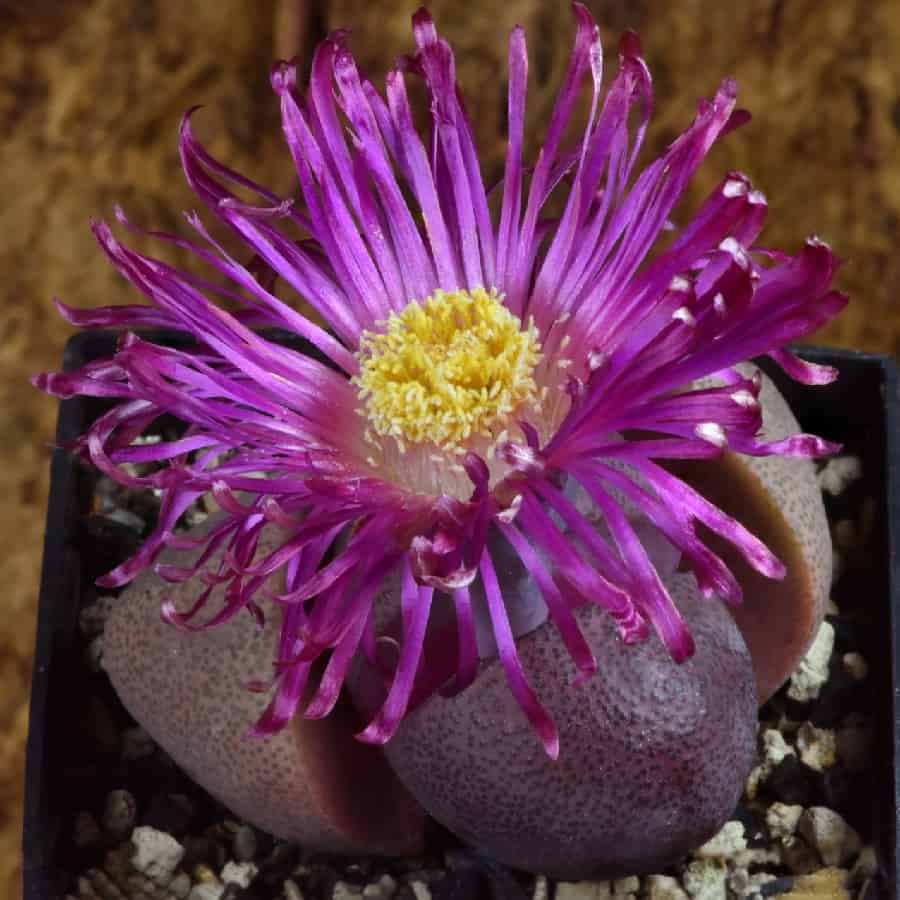
A highly sought-after cultivar, ‘Royal Flush’ boasts a unique purple coloring and deep rose flowers with a contrasting white center, unlike the golden-apricot blooms of the true P. nelii.
Pleiospilos simulans (Liver Quaggafig)
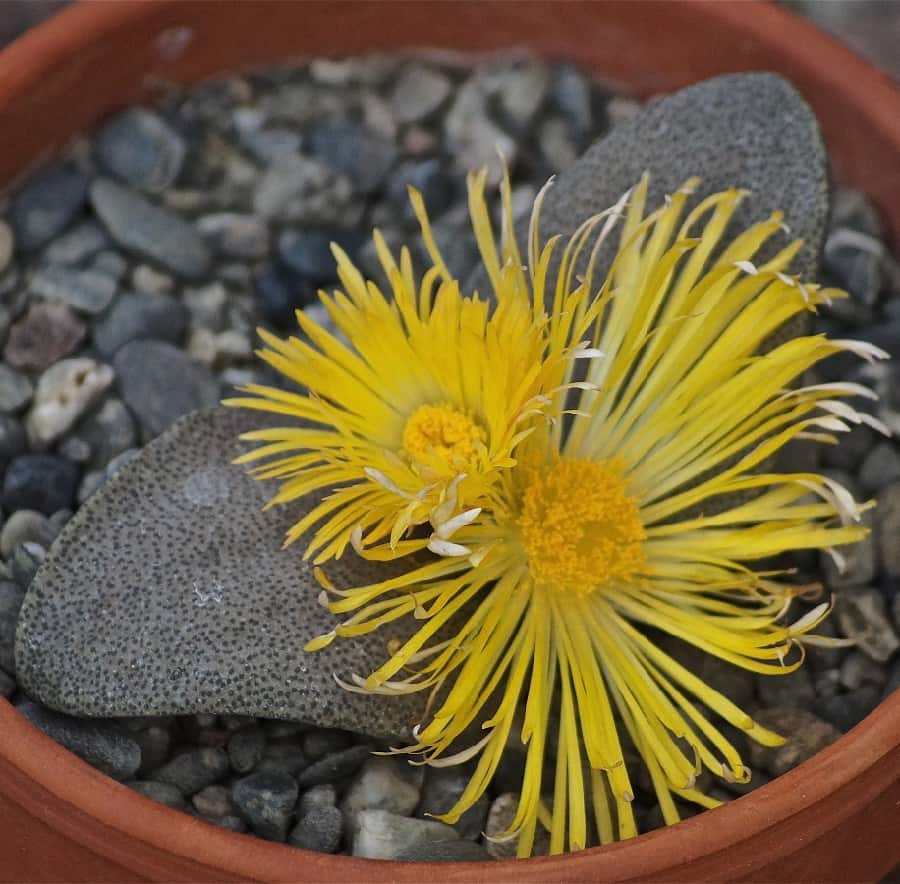
One of the largest and most unusual Pleiospilos species, P. simulans is a slowly clump-forming succulent best suited for hot, sunny locations.
Read also:
1,000 Types of Succulents with Pictures
How to Grow and Care for Pleiospilos
Light
Pleiospilos absolutely thrive on bright, direct light. They need at least 6-8 hours of uninterrupted sunlight per day to stay healthy and produce their beautiful flowers. If you’re growing them indoors, make sure to place them in the sunniest spot possible, such as a south-facing window. Supplement with a full-spectrum grow light if natural light is insufficient.
Water
These drought-tolerant succulents have very low watering needs. You should only water when the top 1-2 inches of the soil have completely dried out. During the growing season (spring and summer), water every 2-3 weeks, allowing the soil to dry out fully between waterings. In the winter months, cut back on watering and only provide a light misting every 4-6 weeks. Overwatering is the number one killer of Pleiospilos, so err on the side of underwatering.
During extreme weather in both the summer and winter months, abstain from watering the plant.
Soil
Well-draining soil is crucial for Pleiospilos. Use a potting mix formulated for succulents, amended with coarse sand, perlite, or pumice to improve drainage. A ratio of 1 part cactus mix to 2 parts mineral grit works perfectly. Plant your Pleiospilos in a 4-inch deep pot with ample drainage holes to prevent root rot.
Temperature and Humidity
Pleiospilos are native to the arid regions of South Africa, so they thrive in warm, dry conditions. Ideal temperatures range from 65-85°F (18-29°C). Avoid exposing them to cold drafts or temperatures below 50°F (10°C), as they are sensitive to cold. Additionally, these succulents prefer low humidity environments, so mist them sparingly and avoid placing them in bathrooms or other high-humidity areas.
Fertilizer
Pleiospilos have modest fertilizer needs. Apply a balanced, water-soluble fertilizer diluted to half strength once or twice during the growing season. Avoid over-fertilizing, as this can lead to leggy growth and disease issues.
How to Propagate Pleiospilos
While Pleiospilos can be tricky to propagate, the rewarding results make it well worth the effort. These succulents can be propagated both from seed and by leaf cuttings.
Leaf Propagation
- Gently twist off a healthy, plump leaf from the parent plant, ensuring you get the entire leaf including the base.
- Allow the leaf cutting to dry out and develop a callus on the cut end, which may take several days.
- Plant the leaf cutting in a well-draining succulent soil mix, burying the callused end just below the surface.
- Water sparingly and place in bright, indirect light. Roots and a new plantlet should begin to form in 4-8 weeks.
- Once the new plant has several sets of leaves, you can transplant it into its own container.
Seed Propagation
- Collect seeds from the spent flowers of your Pleiospilos plant. The seeds are small and round.
- Fill a shallow tray or pot with a fast-draining cactus/succulent soil mix.
- Sprinkle the Pleiospilos seeds evenly over the soil, spacing them about 1 inch apart.
- Lightly cover the seeds with a thin layer of soil, then mist the surface to moisten.
- Place the tray in a warm, bright location, ideally around 70-85°F (21-29°C). Keep the soil lightly moist but not waterlogged.
- Germination can take 2-6 weeks. Once the seedlings develop their first set of true leaves, you can carefully transplant them into individual pots.
With patience and the right growing conditions, you’ll soon have a thriving collection of these captivating succulents. Bring the magic of Pleiospilos into your home and prepare for your jaw to drop!
FAQs
Is Pleiospilos nelii a Lithops?
Pleiospilos nelii is often confused with Lithops because they are both very similar. They come from the same family but are very different. You can distinguish them by the size and color of their flowers – Pleiospilos nelii has larger, bright orange flowers compared to the smaller white or yellow blooms of Lithops. They also have opposite blooming seasons, with Pleiospilos thriving in spring and summer while Lithops prefer autumn and winter. Additionally, Lithops shed their leaves each season whereas Pleiospilos can retain leaves from multiple seasons.
When should I repot Pleiospilos?
Pleiospilos are slow-growing succulents that only need repotting every 3-5 years. The best time to repot is during the growing season, in spring or summer. Use a well-draining potting mix and a container that is only slightly larger than the previous one. Avoid disturbing the roots any more than necessary, as Pleiospilos are sensitive to root damage. With proper care and repotting at the right time, your split rock succulent will continue to thrive for years to come.
